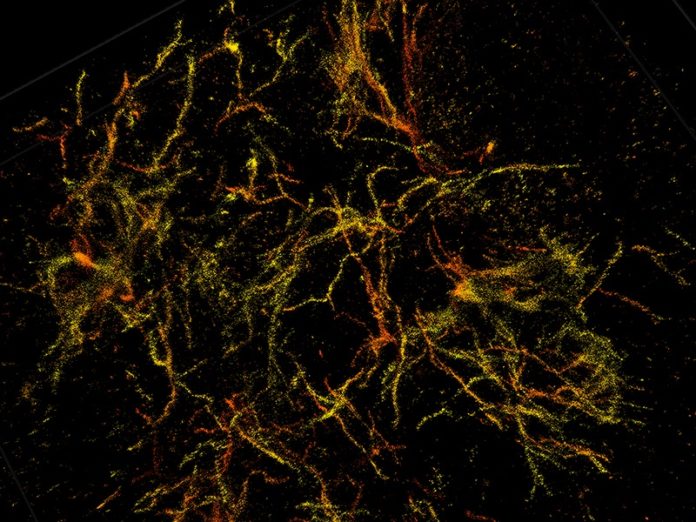According to an estimate, 40% of Americans over the age of 85 have Alzheimer’s disease. One noteworthy issue with understanding Alzheimer’s isn’t having the capacity to obviously observe why the malady begins.
To gather clear insights on this, scientists at the Purdue University have developed a 3D super-resolution nanoscope that offers provides a 3D view of brain molecules with 10 times greater detail. This imaging technique could help reveal how the disease progresses and where new treatments could intervene.
The instrument helped Indiana University specialists better comprehend the structure of plaques that shape in the mind of Alzheimer’s patients, pinpointing the attributes that are perhaps responsible for harm.
Some time before Alzheimer’s creates in an individual, waxy deposits called amyloid plaques aggregate in the mind. These groups interface with encompassing cells, causing aggravation that annihilates neurons and makes memory issues.
Scientists suggest that the deposition of these plaques is currently the earliest detectable evidence of pathological change leading to Alzheimer’s disease.
The super-resolution nanoscopes uses “adaptable optics” – deformable mirrors that change shape to compensate for light distortion, called “aberration,” that happens when light signals from single molecules travel through different parts of a cell or tissue structures at different speeds.
It reconstructs the whole tissue, its cells, and cell constituents at a resolution six to 10 times higher than conventional microscopes, allowing a clear view through 30-micron thick brain sections of a mouse’s frontal cortex.
During the study, scientists used mice that were genetically engineered to develop the characteristic plaques that typify Alzheimer’s disease.
Gary Landreth, professor of anatomy and cell biology at the Indiana University School of Medicine’s Stark Neurosciences Research Institute said, “While strictly a research tool for the foreseeable future, this technology has allowed us to see how the plaques are assembled and remodeled during the disease process. It gives insight into the biological causes of the disease so that we can see if we can stop the formation of these damaging structures in the brain.”
Using the nanoscope, scientists were able to determine that these 3D reconstructions that amyloid plaques are like hairballs, entangling surrounding tissue via their small fibers that branch off waxy deposits.
Landreth said, “We can see now that this is where the damage to the brain occurs. The mouse gives us validation that we can apply this imaging technique to human tissue.”
Fang Huang, Purdue assistant professor of biomedical engineering said, “This development is particularly important for us as it had been quite challenging to achieve high-resolution in tissues. We hope this technique will help further our understanding of other disease-related questions, such as those for Parkinson’s disease, multiple sclerosis, and other neurological diseases.”
This study was distributed in the journal Nature Methods.
